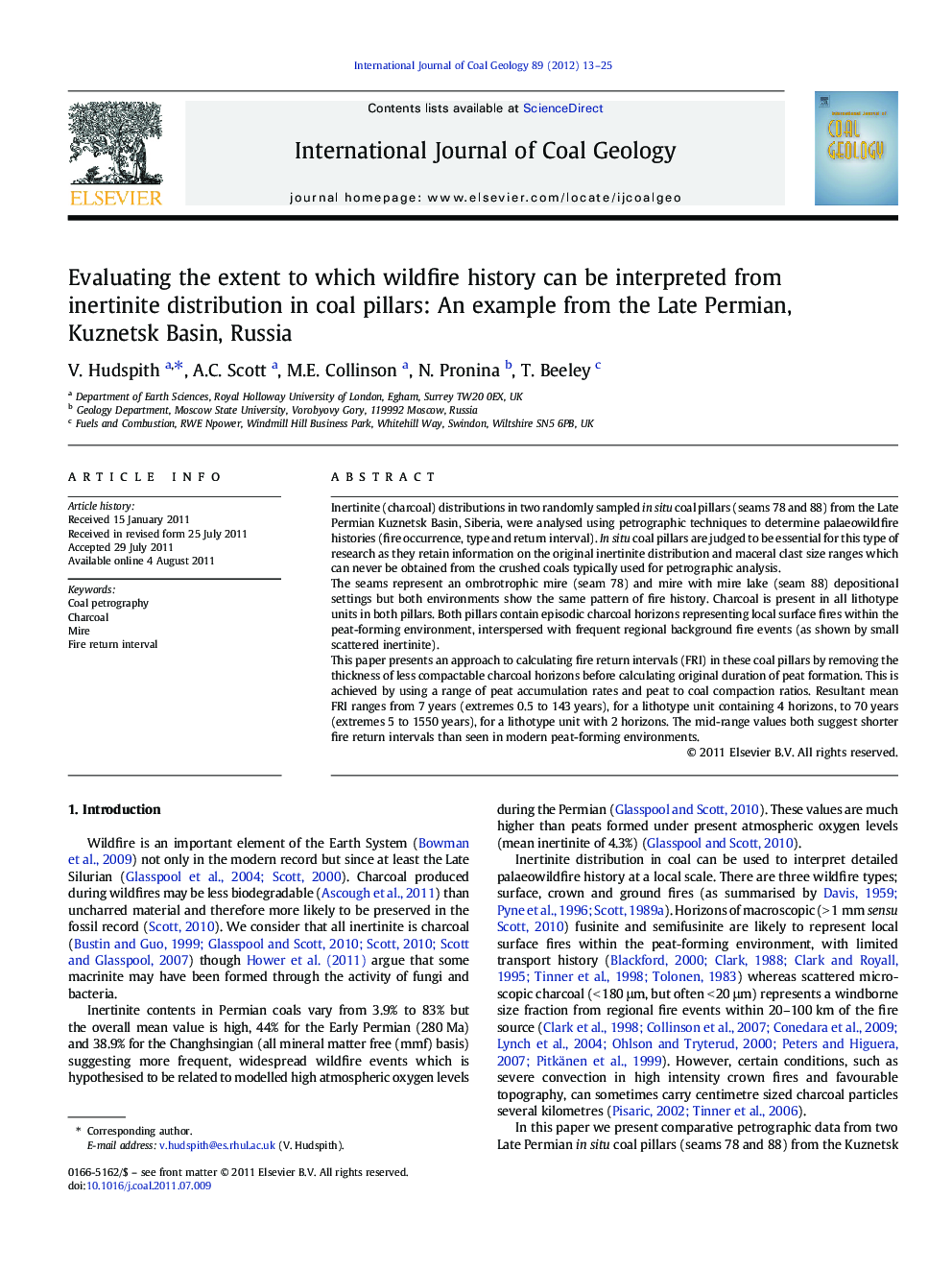| Article ID | Journal | Published Year | Pages | File Type |
|---|---|---|---|---|
| 1753594 | International Journal of Coal Geology | 2012 | 13 Pages |
Inertinite (charcoal) distributions in two randomly sampled in situ coal pillars (seams 78 and 88) from the Late Permian Kuznetsk Basin, Siberia, were analysed using petrographic techniques to determine palaeowildfire histories (fire occurrence, type and return interval). In situ coal pillars are judged to be essential for this type of research as they retain information on the original inertinite distribution and maceral clast size ranges which can never be obtained from the crushed coals typically used for petrographic analysis.The seams represent an ombrotrophic mire (seam 78) and mire with mire lake (seam 88) depositional settings but both environments show the same pattern of fire history. Charcoal is present in all lithotype units in both pillars. Both pillars contain episodic charcoal horizons representing local surface fires within the peat-forming environment, interspersed with frequent regional background fire events (as shown by small scattered inertinite).This paper presents an approach to calculating fire return intervals (FRI) in these coal pillars by removing the thickness of less compactable charcoal horizons before calculating original duration of peat formation. This is achieved by using a range of peat accumulation rates and peat to coal compaction ratios. Resultant mean FRI ranges from 7 years (extremes 0.5 to 143 years), for a lithotype unit containing 4 horizons, to 70 years (extremes 5 to 1550 years), for a lithotype unit with 2 horizons. The mid-range values both suggest shorter fire return intervals than seen in modern peat-forming environments.
► In situ coal pillars are essential for wildfire interpretation of coal seams. ► Wildfire derived inertinite is present throughout both seams 78 (29.8%) and 88 (48%). ► Both seams show similar wildfire regimes despite variations in environment of deposition. ► Calculated fire return intervals of these Permian coals are higher than modern peatlands.
